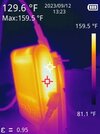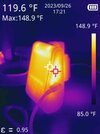Panzer Platform
Well-Known Member
- Joined
- Jun 9, 2022
- Messages
- 2,802
- Reaction score
- 2,714
- Location
- California
- Country
- United States
- Dash Cam
- 2024 Minimum Requirements: STARVIS 2 & HDR
My retail / production A229 Plus 3-CH Firmware 0912 was just delivered a few minutes ago.
I unpacked it, and connected all the cameras to make sure everything is working.
I had it connected to my power supply, and it appears to be less power hungry than the A229 Pro, (only 6 Watts compared to 8 Watts).
I’ll go deeper into this when I test power consumption.
I’m excited to test, and see the difference of the A229 Plus (IMX675) & A229 Pro (IMX678) front cameras, especially at night, and low light conditions.
Based on the last two weeks of testing the A119 Mini 2 (IMX675) has been outperforming the A229 Pro (IMX678) during my NIGHT TIME HDR tests.
It’s been explained to me by Bill (Viofo) comparing a 2K image sensor to a 4K image sensor at NIGHT & LOW LIGHT conditions is not a fair fight because the 2K has larger pixels.
Here’s some photos of the Original A229, A229 Plus, and A229 Pro.

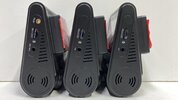
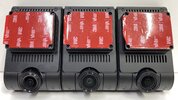

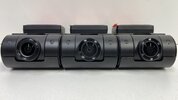
I unpacked it, and connected all the cameras to make sure everything is working.
I had it connected to my power supply, and it appears to be less power hungry than the A229 Pro, (only 6 Watts compared to 8 Watts).
I’ll go deeper into this when I test power consumption.
I’m excited to test, and see the difference of the A229 Plus (IMX675) & A229 Pro (IMX678) front cameras, especially at night, and low light conditions.
Based on the last two weeks of testing the A119 Mini 2 (IMX675) has been outperforming the A229 Pro (IMX678) during my NIGHT TIME HDR tests.
It’s been explained to me by Bill (Viofo) comparing a 2K image sensor to a 4K image sensor at NIGHT & LOW LIGHT conditions is not a fair fight because the 2K has larger pixels.
Here’s some photos of the Original A229, A229 Plus, and A229 Pro.





Last edited:

